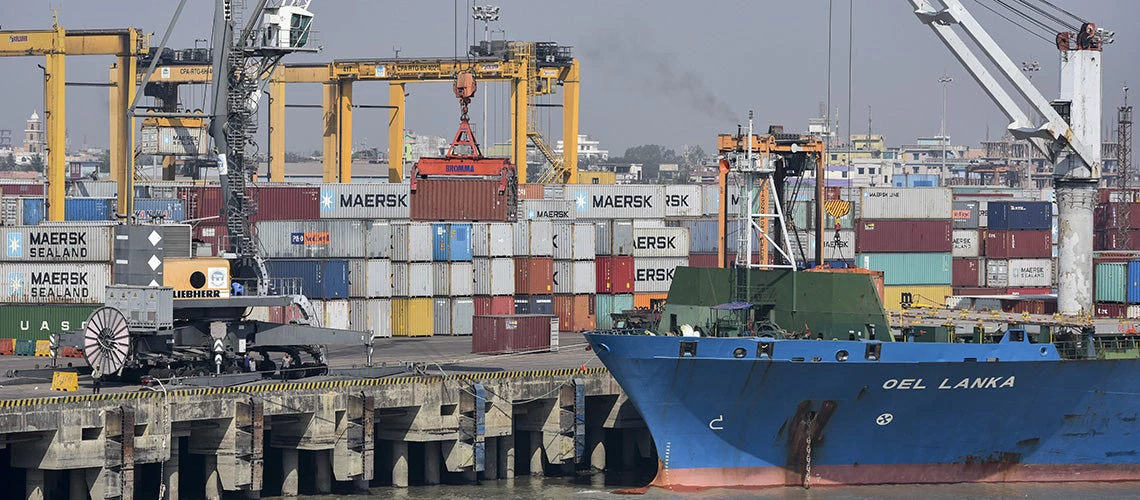
Ethiopia’s main imported goods
Ethiopia is one of Africa’s fastest-growing economies, and its import patterns reflect the needs of an economy in transition. Despite efforts to expand domestic production, Ethiopia remains heavily reliant on imports for various goods. These imports play a vital role in supporting Ethiopia’s development, supplying necessary items that fuel the country’s infrastructure, agriculture, energy, and consumer markets. Ethiopia’s main imports are dominated by machinery and equipment, vehicles, fuel, chemicals, pharmaceuticals, foodstuffs, and construction materials.
1. Machinery and Equipment: Machinery, including industrial and agricultural machinery, as well as electrical machinery and electronics, make up a significant portion of Ethiopia’s imports. These items are essential for Ethiopia’s manufacturing, infrastructure development, and mechanized agriculture sectors. Industrial machines are especially critical as Ethiopia strives to develop its industries, while electronics support the growing demand for consumer technology and communication networks. China, Germany, and the United States are key suppliers of these products to Ethiopia.
2. Vehicles and Automotive Parts: The Ethiopian government has invested heavily in road networks and transportation to improve connectivity and boost the economy. As a result, vehicles and automotive parts form a large share of Ethiopia’s imports, catering to the needs of public transportation, logistics, and private mobility. Commercial vehicles, trucks, buses, and passenger cars are heavily imported from Japan, India, and other countries. The demand for these imports is driven by an expanding middle class and urban population in cities such as Addis Ababa.
3. Fuel and Petroleum Products: Ethiopia has no significant oil reserves of its own, making it reliant on fuel imports to meet its energy needs. Petroleum and petroleum products are among Ethiopia’s largest imports, powering transportation, industry, and electricity generation. Due to the landlocked nature of the country, petroleum imports are transported mainly through Djibouti, Ethiopia’s primary port access, which increases transportation costs. Saudi Arabia, Kuwait, and other Gulf countries are Ethiopia’s primary fuel suppliers.
4. Chemicals and Fertilizers: Ethiopia’s growing agricultural sector depends on chemical fertilizers to boost crop yields, especially for staple crops like coffee, maize, and wheat. Chemical imports also include industrial chemicals used in manufacturing and other industries. Ethiopia’s dependence on imported fertilizers highlights its agricultural expansion goals, as it seeks to move from subsistence farming to commercial agriculture. Fertilizer imports primarily come from countries like Morocco, Russia, and the Middle East.
5. Pharmaceuticals and Medical Supplies: Pharmaceuticals are essential imports due to Ethiopia’s relatively underdeveloped pharmaceutical manufacturing industry. The country relies on imported medicines, medical equipment, and supplies to meet public health needs. The demand for pharmaceuticals has grown with the government’s commitment to improving healthcare services, especially in rural areas. India and China are key exporters of pharmaceutical products to Ethiopia.
6. Foodstuffs and Edible Oils: Despite Ethiopia’s large agricultural sector, certain foods are still imported, especially wheat and edible oils. The country’s food demand continues to grow due to population growth, and its domestic production is often insufficient to meet urban needs. Wheat is a critical import because of its use in the Ethiopian diet, particularly for making bread and pasta. In recent years, the Ethiopian government has worked to improve food security, but it still relies on food imports from countries like the United States, Turkey, and Ukraine.
7. Construction Materials: Ethiopia’s rapid urbanization and infrastructure projects have led to high demand for construction materials such as steel, cement, and other building products. The Ethiopian government’s ambitious infrastructure projects, like the Grand Ethiopian Renaissance Dam, as well as housing and transportation projects, require a steady supply of imported materials. Steel, in particular, is imported to support the construction sector, as domestic production is insufficient. China is the leading supplier of construction materials to Ethiopia.
Trade Challenges and Policy Responses
Ethiopia’s reliance on imports presents challenges, particularly with foreign exchange reserves, as the government often faces currency shortages that impact its ability to import essential goods. This reliance also puts pressure on Ethiopia’s trade deficit, as imports exceed exports, leading to an imbalance that has led the government to implement policies aimed at increasing domestic production and self-reliance. Efforts to establish local manufacturing plants, attract foreign direct investment, and diversify exports are part of Ethiopia’s long-term strategy to address its dependence on imports.
In conclusion, Ethiopia’s main imports reflect its developmental needs and underscore the economic and infrastructure challenges the country faces. The import of machinery, vehicles, fuel, chemicals, pharmaceuticals, foodstuffs, and construction materials highlights the country’s reliance on external sources for key goods. As Ethiopia continues to modernize and grow, it will need to find ways to balance its imports with domestic production to achieve sustainable economic development.




Leave a Reply